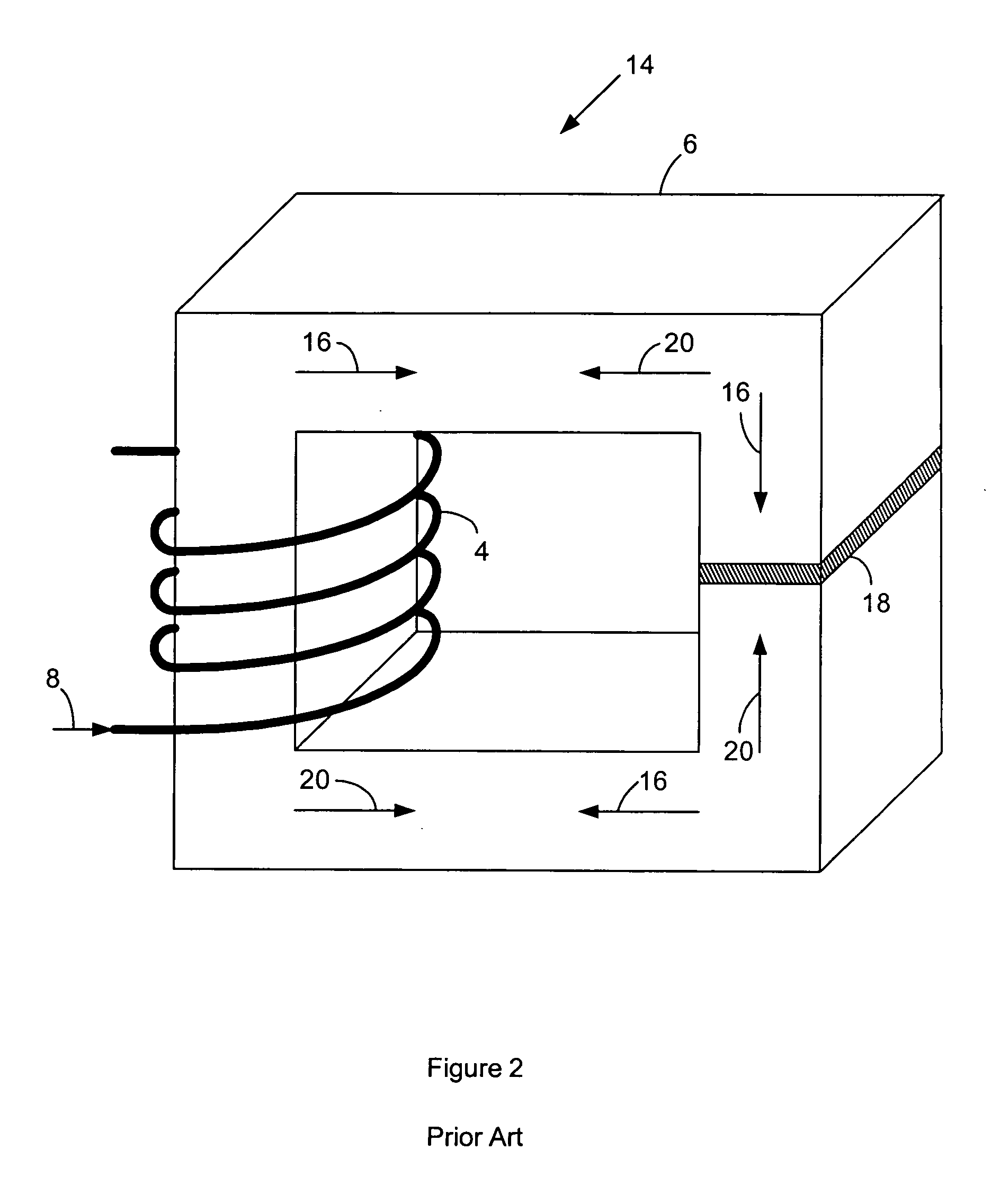Direct current link inductor for power source filtration
a technology of direct current and inductor, which is applied in the direction of inductance, variable inductance, core/yokes, etc., can solve the problems of inconvenient control of the magnetic field generated by the permanent magnet, large inductance, and heavy weight, and achieve the effect of net h
- Summary
- Abstract
- Description
- Claims
- Application Information
AI Technical Summary
Benefits of technology
Problems solved by technology
Method used
Image
Examples
Embodiment Construction
[0014]FIG. 1 is a perspective view of a typical inductor 2 according to the prior art. The inductor 2 has a primary winding 4 of N turns on a magnetic core 6. The primary winding 4 carries a current I along a direction indicated by arrow 8. The current I generates a magnetic field H along a magnetic path indicated by arrows 10. The magnetic core 6 has an air gap 12 that is placed across the magnetic path 10. For the typical inductor 2, the magnetic field H may be represented by: H=KNIIe
wherein K is a constant and Ie is the effective length of the magnetic path 10. Of course, the air gap 12 increases the effective length of the magnetic path 10, and thereby it reduces the possibility of magnetic saturation by reducing H.
[0015]FIG. 2 is a perspective view of another inductor 14 according to the prior art. The inductor 14 has a primary winding 4 of N turns on a magnetic core 6. The primary winding 4 carries a current I1 along a direction indicated by arrow 8. The current I1 generate...
PUM
| Property | Measurement | Unit |
|---|---|---|
| magnetic field H1 | aaaaa | aaaaa |
| magnetic field H2 | aaaaa | aaaaa |
| magnetic field | aaaaa | aaaaa |
Abstract
Description
Claims
Application Information
 Login to View More
Login to View More - R&D
- Intellectual Property
- Life Sciences
- Materials
- Tech Scout
- Unparalleled Data Quality
- Higher Quality Content
- 60% Fewer Hallucinations
Browse by: Latest US Patents, China's latest patents, Technical Efficacy Thesaurus, Application Domain, Technology Topic, Popular Technical Reports.
© 2025 PatSnap. All rights reserved.Legal|Privacy policy|Modern Slavery Act Transparency Statement|Sitemap|About US| Contact US: help@patsnap.com



